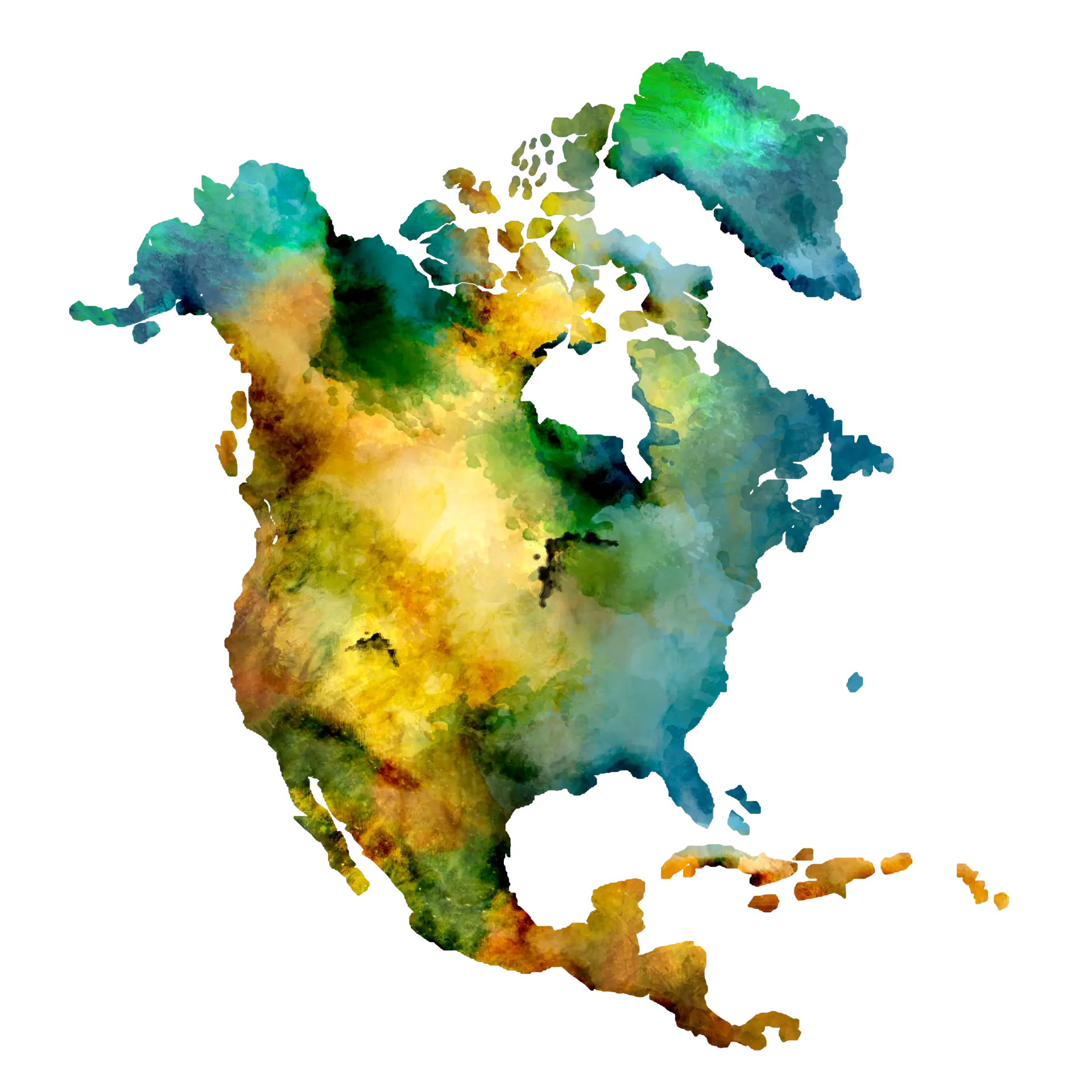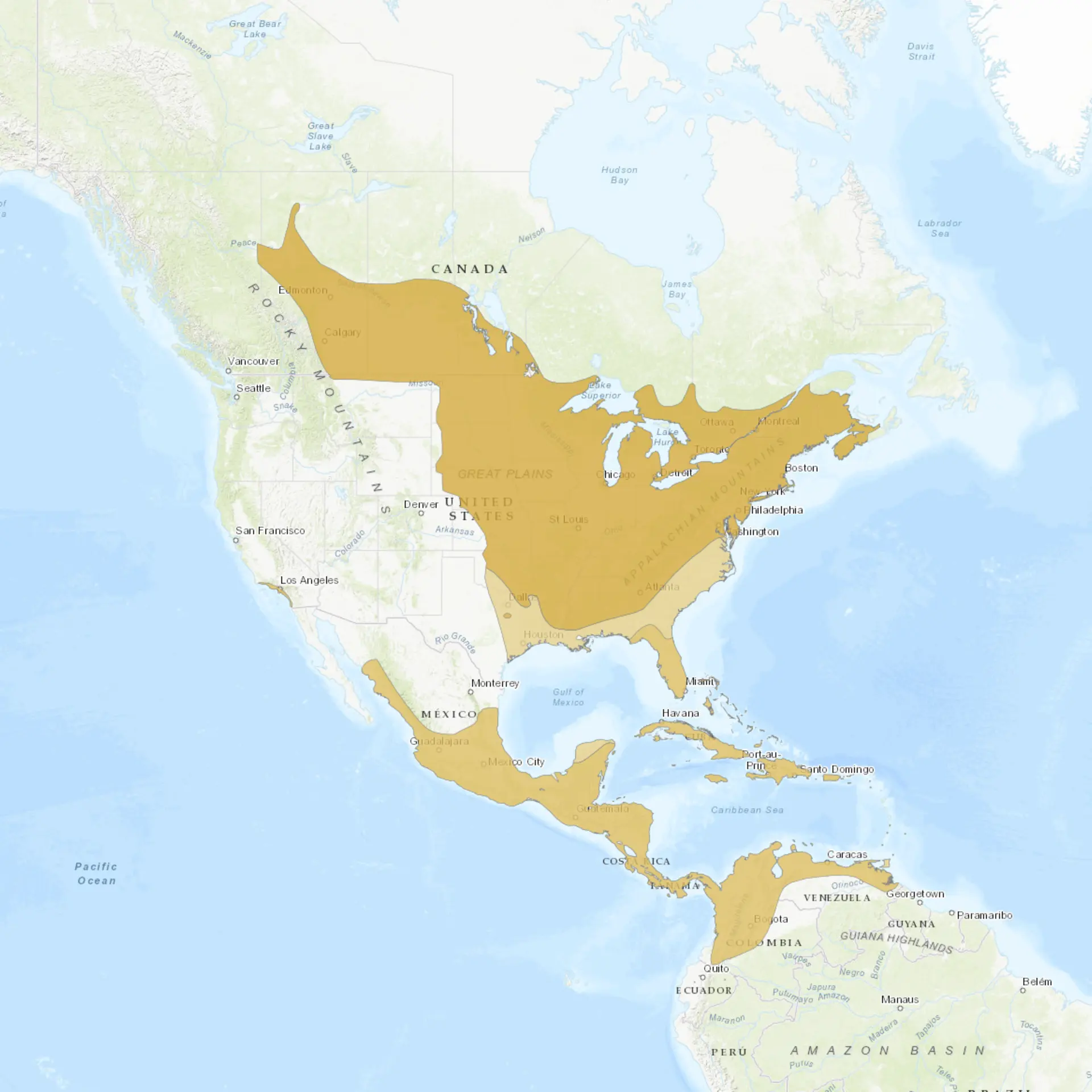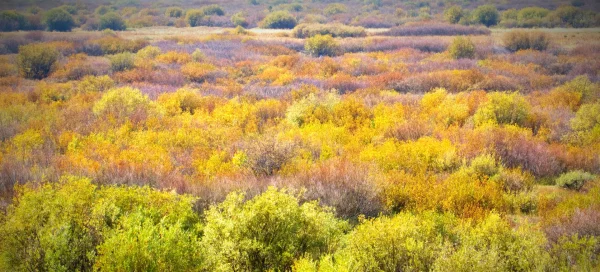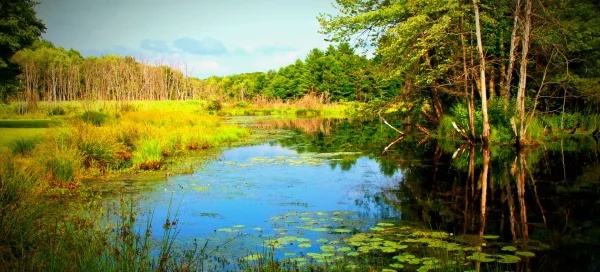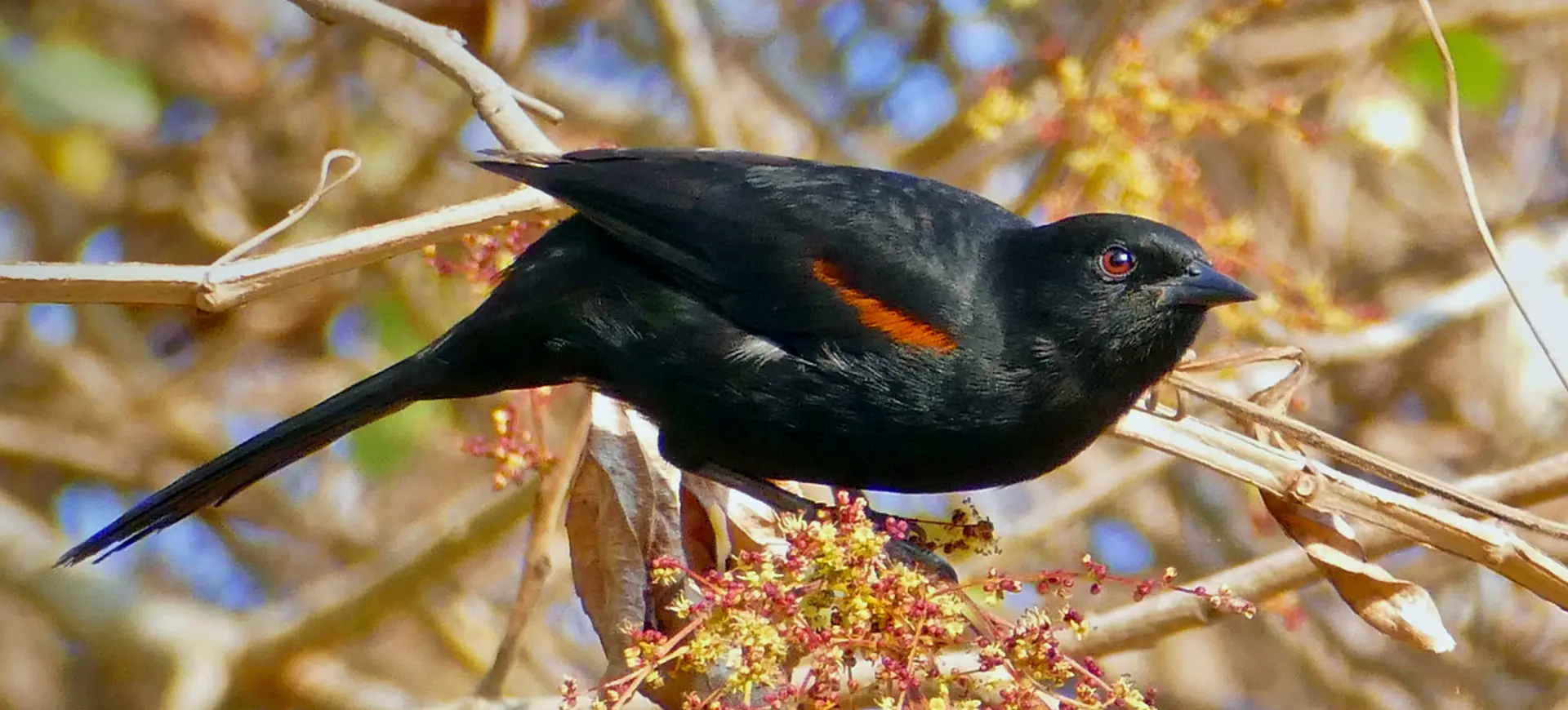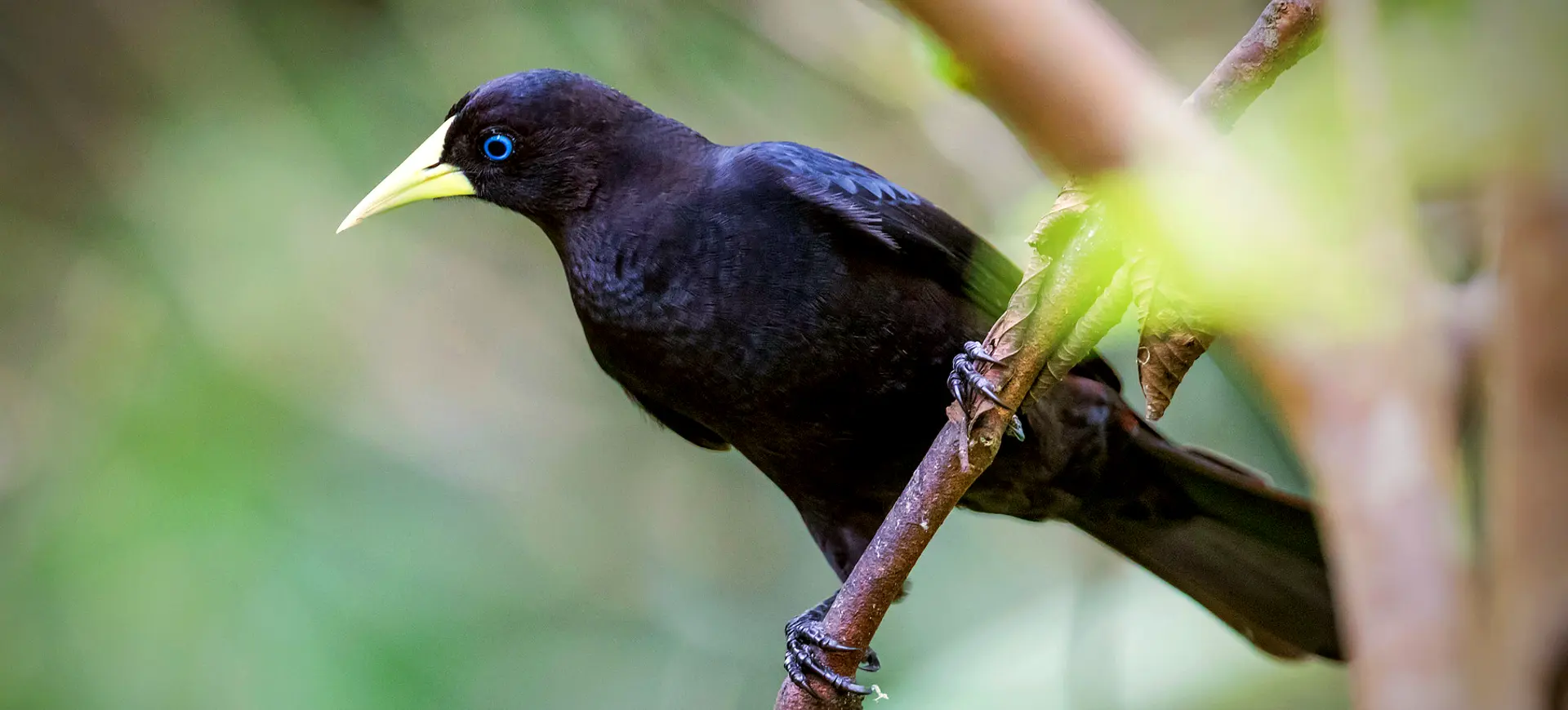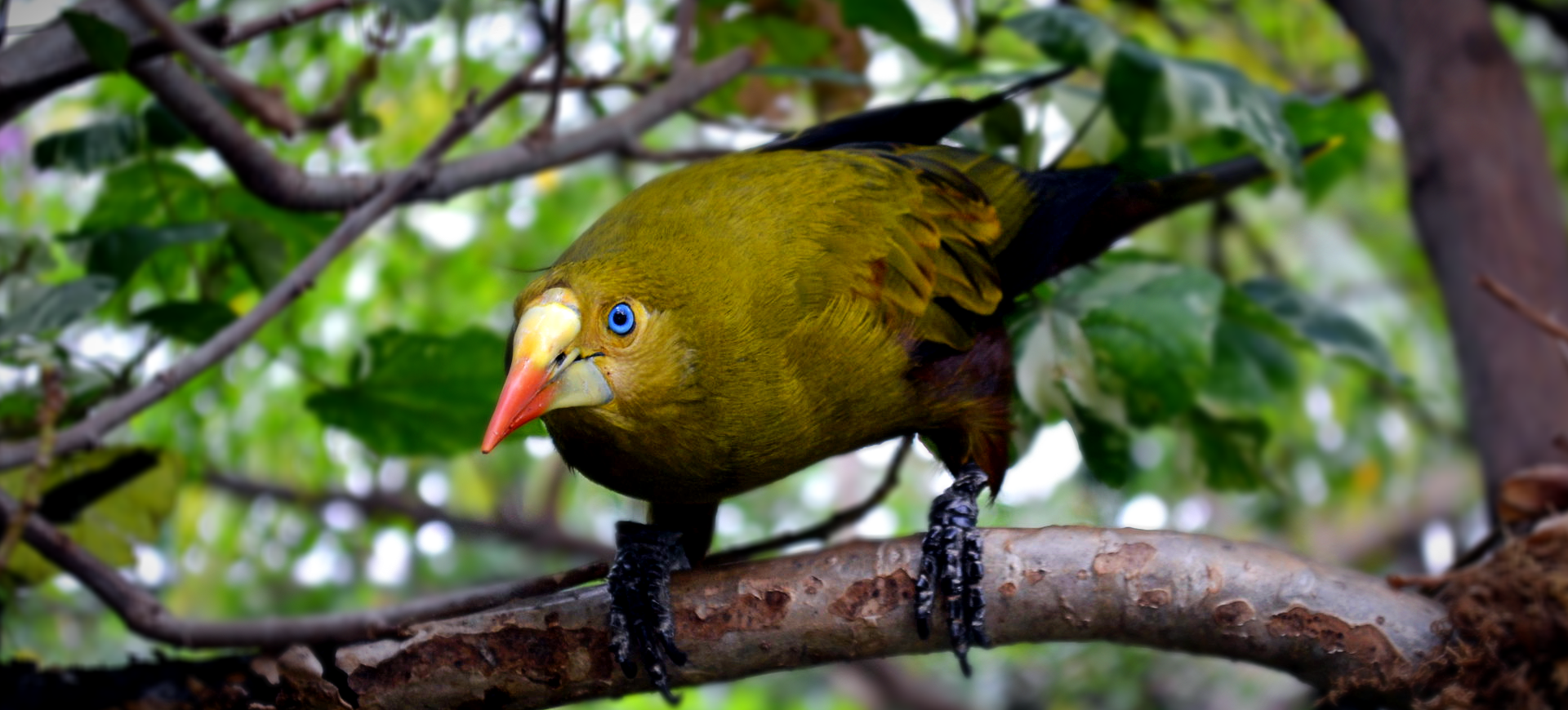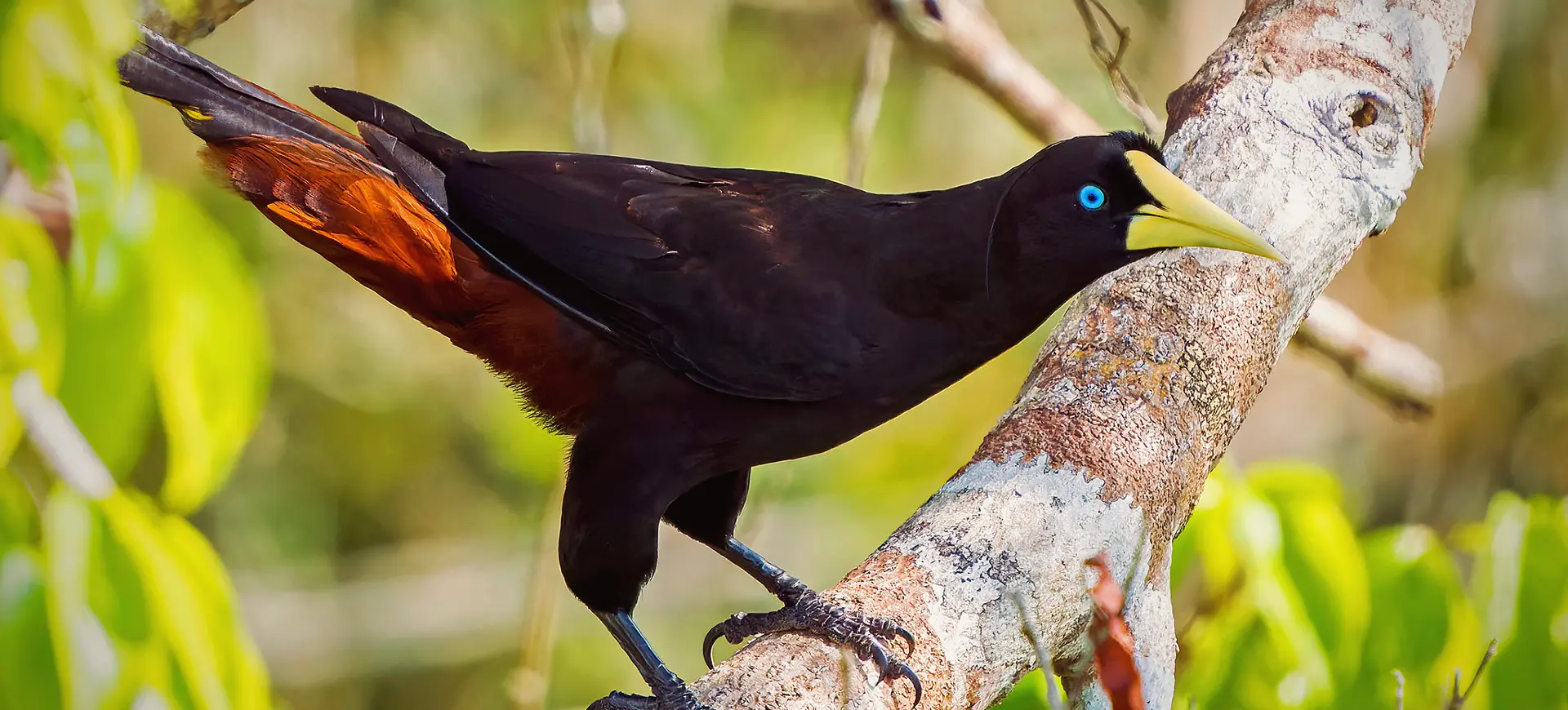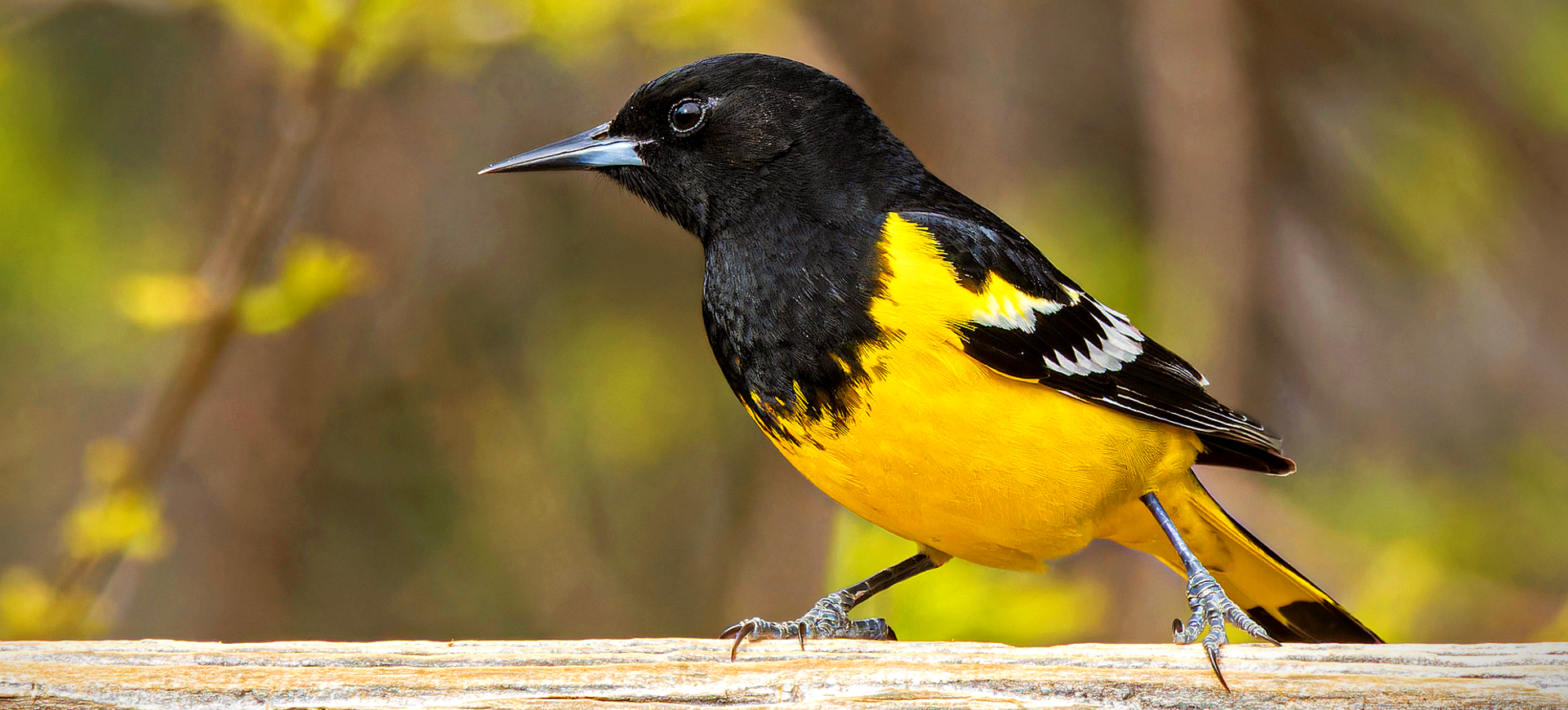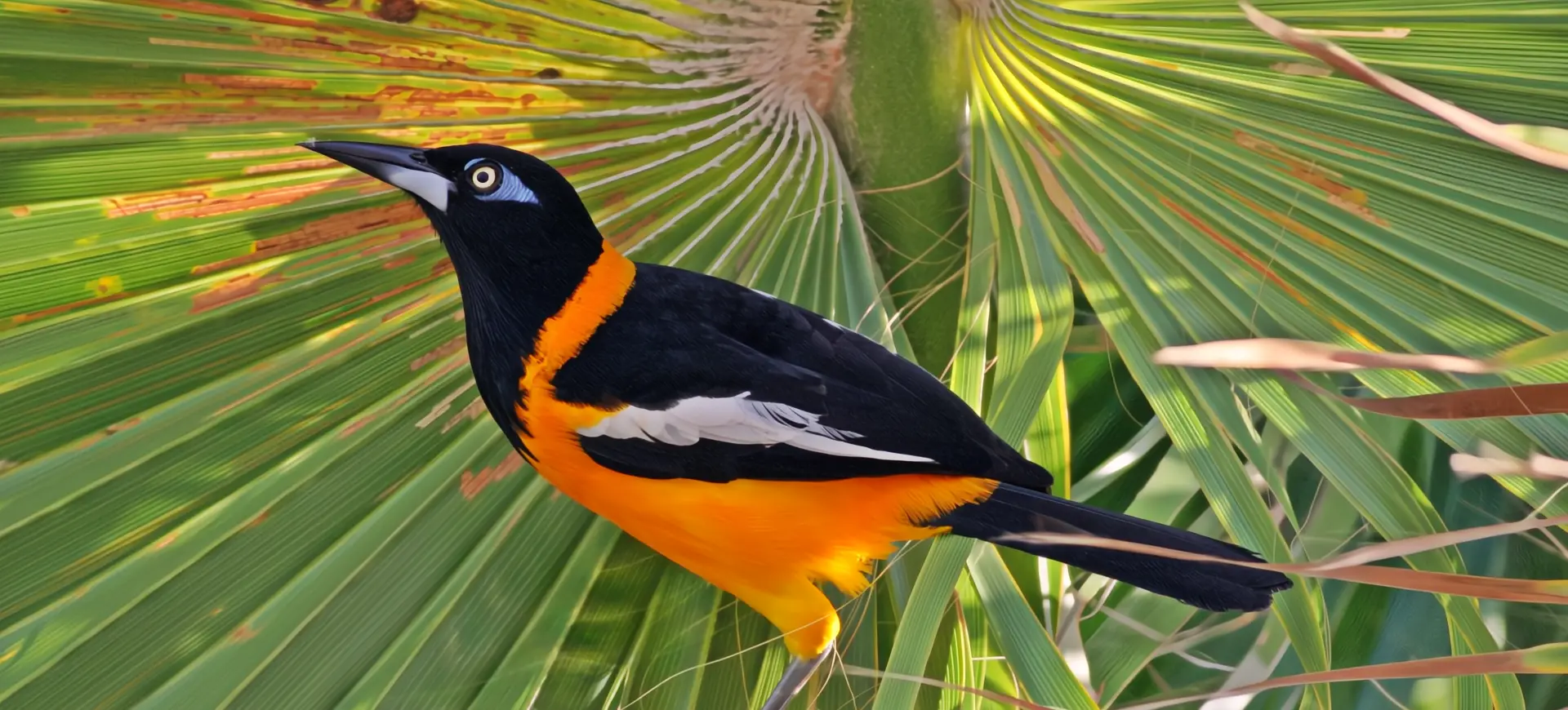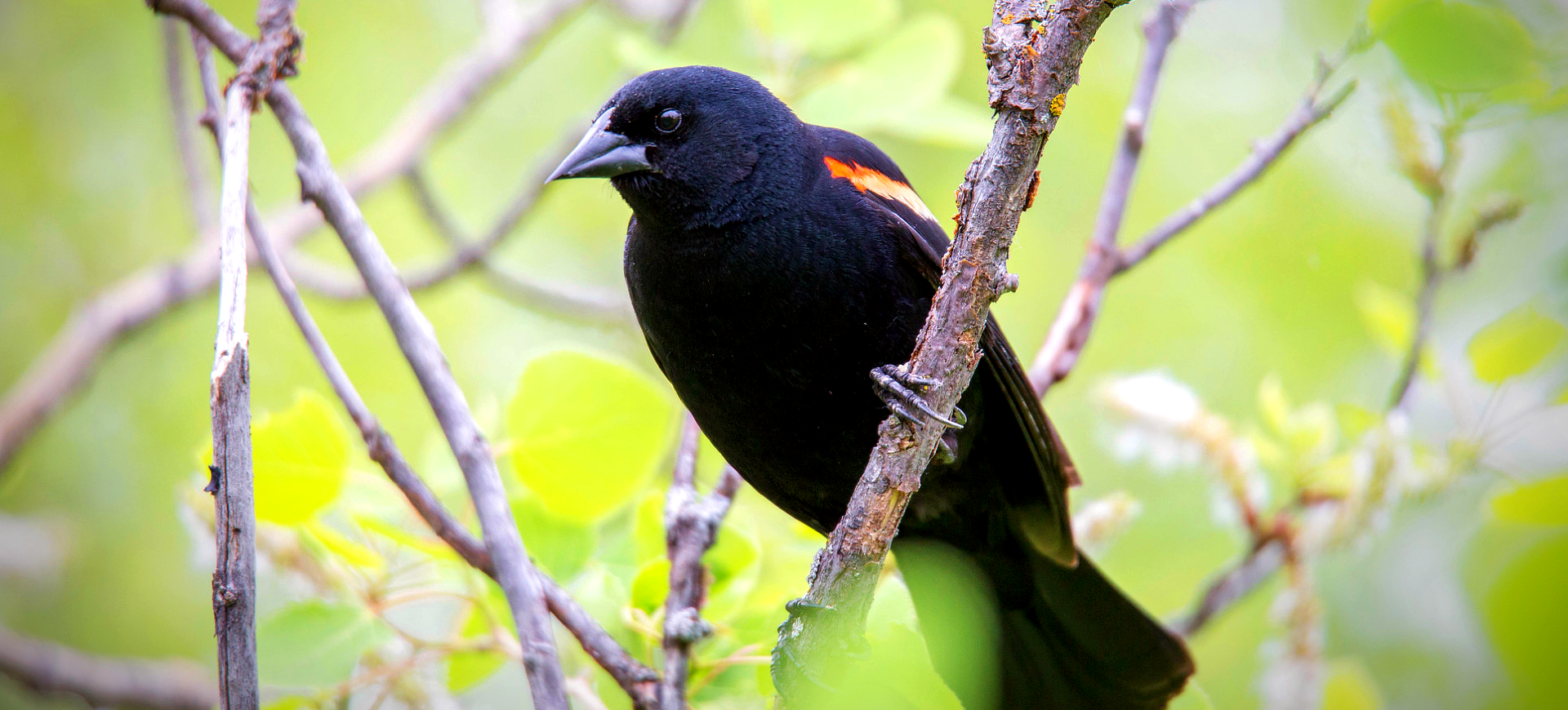Overview
The Baltimore Oriole (Icterus galbula) is a small songbird renowned for its vivid orange and black plumage, making it a beloved and iconic species, especially in North America’s eastern and central regions. Males boast a brilliant orange underpart and shoulder line with a contrasting black head and back, while females and juveniles display a more subdued yellowish-orange and brownish-black coloration. This striking coloration makes them easily identifiable and a favorite among birdwatchers and nature enthusiasts.
These birds are migratory, spending the winter months in Central America and the northern part of South America, then returning to North America to breed in the spring and summer. Their preferred habitats include open woodlands, forest edges, and overgrown fields, where they can be seen gracefully flitting among the tree branches. The Baltimore Oriole is particularly noted for its unique, bag-like nest, which the female weaves hanging from the end of a tree branch.
The diet of the Baltimore Orioles is quite varied, consisting primarily of insects during the breeding season, which provides them with the necessary protein for growth and reproduction. They also have a sweet tooth, frequently consuming nectar, fruits, and even jelly from admirers in backyard feeders. This varied diet is beneficial as it allows them to adapt to different food sources throughout their range and migration.
Taxonomy
Kingdom
Phylum
Class
Order
Family
Genus
Species
Type
Current distribution:
The Baltimore Oriole is a migratory bird, spending the winter months in Central America and the northern part of South America, including Colombia, Venezuela, and Ecuador. As spring approaches, they migrate north to breed in North America, with their range extending from central Canada down through the eastern and central United States.
Their migration is somewhat dependent on weather patterns and food availability, with the birds typically arriving in their breeding grounds in late April to early May. They begin their journey south again in the fall, usually leaving by the end of September. This annual migration is a remarkable journey, with some individuals traveling thousands of miles yearly.
Physical Description:
The Baltimore Oriole is a small, slender bird with a length of approximately 6.7 to 7.5 inches and a wingspan ranging from 9.1 to 11.8 inches. Males are unmistakable with bright orange underparts and shoulders, sharply contrasted by a black head, back, and central tail feathers. Their wings are black with a white wing bar and orange shoulder patch. The female’s plumage is more muted, with yellowish-orange and grayish-olive tones, providing better camouflage.
Both sexes have a pointed bill slightly curved down, an adaptation that aids their foraging habits. Their eyes are dark, and they possess strong, agile legs and feet suited to their arboreal lifestyle. During flight, their long tail and strong, rapid wing beats give them a graceful and buoyant appearance. Juveniles resemble females but are generally more brownish and gradually acquire adult plumage after the first year.

Lifespan: Wild: ~12 Years || Captivity: ~15 Years

Weight: Male: 1.1-1.4 oz (31-40g) || Female: 0.8-1.3 oz (23-37g)

Length: Male & Female: 6.7-7.5 in (17-19 cm)

Wingspan: Male & Female: 9.1-11.8 in (23-30 cm)

Top Speed: 30 mph (48 km/h)
Characteristic:
Native Habitat:
Baltimore Orioles inhabit various open woodland habitats, including deciduous forests, forest edges, and overgrown fields. They are particularly associated with areas with a high abundance of tall trees, providing suitable sites for their hanging nests. During the breeding season, they can be commonly found in North American areas, particularly in the eastern and central regions and parts of the southern Canadian provinces.
Their nesting sites are often located on the end of a branch, away from the main trunk, protecting from predators. While they prefer natural settings, Baltimore Orioles have adapted well to human-altered landscapes. They can often be found in orchards, parks, and suburban areas where suitable trees and food sources are available.
Climate Zones:
Biogeographical Realms:
Continents:
Countries:
Diet:
Diet & Feeding Habits:
Baltimore Orioles are known for their adaptable and opportunistic feeding habits. During the breeding season, they primarily consume insects such as beetles, crickets, and caterpillars, which provide the necessary protein for growing chicks. They are particularly fond of caterpillars, including those of the gypsy moth, which harm many trees. This makes them valuable for natural pest control in their ecosystems.
Aside from insects, they strongly prefer sweet foods, frequently feeding on nectar from flowers, ripe fruits, and berries. They are known to visit hummingbird feeders for nectar and are attracted to backyard fruit and jelly offerings. This varied diet allows them to thrive in various environments and contributes to their success as a species.
Mating Behavior:
Mating Description:
Baltimore Orioles are generally monogamous, with pairs forming each breeding season. The male attracts a female by singing and displaying his bright plumage, often performing flight displays where he flies up and then glides down with wings and tail fully spread. Once a pair is formed, they are often seen together, with the male feeding the female as part of their courtship behavior.
The female is responsible for constructing the distinctive hanging nest woven from various materials, including grass, hair, and artificial fibers. The nest is a remarkable feat of engineering, securely attached to the end of a branch and shaped like a pouch. The female lays 3 to 7 eggs, which she incubates for about 12 to 14 days. Both parents feed the chicks, which fledge about two weeks after hatching, but remain dependent on their parents for a few more weeks.
Reproduction Season:
Birth Type:
Pregnancy Duration:
Female Name:
Male Name:
Baby Name:
Social Structure Description:
Baltimore Orioles are relatively solitary outside of the breeding season but become more social during migration when they may join mixed flocks of other species. During the breeding season, they are territorial, with males defending a small territory around the nesting site. The social structure is largely centered around the breeding pair and their offspring, with both parents involved in raising the young.
Their communication includes a variety of calls and songs, with the male’s song being a series of clear, melodious whistles. These vocalizations establish territory, attract mates, and maintain pair bonds. While they are not highly social birds, their interactions during breeding are complex and integral to their reproductive success.
Groups:
Conservation Status:
Population Trend:
The Baltimore Oriole is widely distributed and generally common within its breeding range. However, like many migratory birds, they face threats from habitat loss both on their breeding and wintering grounds. Deforestation in Central and South America can impact their winter habitat, while urban development and changes in land use can affect their breeding areas.
Despite these challenges, the population is considered stable in many areas, partly thanks to their adaptability to human-altered landscapes. Conservation efforts focusing on protecting migratory routes and critical habitat and reducing pesticide use can help ensure their numbers remain healthy. The Baltimore Oriole’s popularity also makes it a flagship species for conservation, drawing attention to the broader issues facing migratory birds.
Population Threats:
The primary threat to Baltimore Orioles is habitat loss due to deforestation, urbanization, and agricultural expansion. On their wintering grounds, the destruction of tropical forests for agriculture and development reduces the available habitat. In their breeding range, open woodland loss and land use changes can limit suitable nesting sites.
Collisions with man-made structures, particularly during migration, are a significant source of mortality. Pesticides and other pollutants can also affect their food supply and overall health. Climate change poses a long-term threat by potentially altering their migratory patterns and the availability of food sources.
Conservation Efforts:
Conservation efforts for Baltimore Orioles include habitat protection and restoration projects, both in their breeding and wintering ranges. Protecting migratory corridors and stopover sites is also crucial. Efforts to reduce pesticide use can help ensure a healthy food supply, and public education campaigns can raise awareness about the threats they face.
Many people contribute to conservation by providing habitat and food sources in their backyards, such as nectar feeders and fruit trees. Monitoring programs and scientific research help track population trends and inform conservation strategies. As a popular and charismatic species, the Baltimore Oriole can serve as an ambassador for the conservation of migratory birds and their habitats.
Additional Resources:
Fun Facts
- The Baltimore Oriole is the state bird of Maryland and is also the inspiration for the name of Baltimore’s Major League Baseball team.
- Their unique, hanging nests are woven so tightly that they can last long after the breeding season, sometimes even remaining intact through the winter.
- They are attracted to oranges and can often be lured to backyard feeders with orange slices or brightly colored nectar feeders.
- Baltimore Orioles are expert foragers, using their slender beaks to probe flowers for nectar and to extract insects from crevices.
- The male’s bright plumage is considered an adaptation for attracting mates, with the most vividly colored males often being more successful.
- They have a sweet tooth and are known to raid orchards for ripe fruit, making them occasional pests to fruit growers.
- The species name, “galbula,” is derived from the Latin word for “yellow,” referring to the female and juvenile’s more subdued coloration.
- Their migration is difficult with many hazards, but they have strong navigational skills, often returning to the same breeding territories each year.
- Baltimore Orioles are important in their ecosystems as pest controllers and pollinators.
- The division of the Baltimore and Bullock’s Orioles into separate species, then back into one (Northern Oriole), and again into two separate species reflects the complexities and ongoing developments in bird taxonomy.

